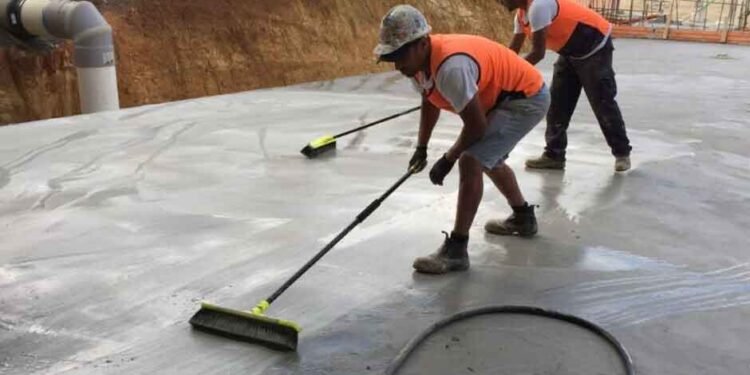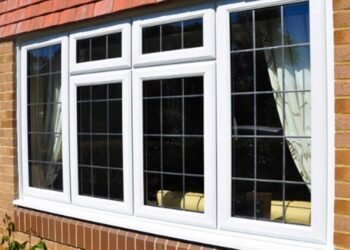A healthy home is a happy home and air quality plays a major role in how healthy our homes are. While the medieval idea of miasma, or ‘bad air’ may have been a fairly basic interpretation of why people get sick, it wasn’t always entirely wrong.
Certain conditions in the home can lead to the accumulation of molds and mildew spores. When inhaled, these can trigger immune responses and allergies, leading to people getting really quite sick- in extreme cases, they can even be life threatening.
The Connection Between Moisture And Indoor Air Quality
Certain parts of our homes are prone to gathering moisture, and this moisture, combined with a lack of ventilation, provides the ideal habitat for molds and mildews to grow and can attract pests. Spaces like basements and crawl spaces are particularly prone to this.
The Stack Effect
Because our homes are never fully sealed- think vents and doors- air from outside gets in, bringing moisture with it. Differences in temperature and humidity within the building causes the air to circulate (the ‘stack’ or ‘chimney’ effect) and when it passes over mold, it spreads the spores around the building.
Of course, humid air isn’t usually enough to provide a fertile breeding ground for mold, but it’s also not the only source of moisture in our homes. Other sources include:
- Poorly ventilated bathrooms and kitchens
- Leaks
- Groundwater penetration
Health Risks
There are numerous health risks associated with poor air quality in the home.
Molds and Mildews
Probably the most common problem associated with a damp home is the growth of mold and mildews. Far from only being unsightly and unpleasant, mold growth can lead to serious health problems and, in extreme cases, even death.
While there is no hard information about how often each type of mold appears in homes in the US, the most common types seem to be Cladosporium, Penicillium and Aspergillus. These reproduce by releasing spores. When inhaled these can cause:
- Respiratory problems
- Allergic reactions
Each of these molds absolutely love damp conditions, away from the light. Spaces which are rarely open, such as basements and crawl spaces, or which contain paper, soft furnishings or carpets are prime locations for mold growth.
Radon Gas Build Up
Radon is a gas which is naturally released from the trace amounts of uranium in rocks and soils and there’s almost always a small amount around us at all times. Usually, the doses we’re exposed to are pretty small and harmless, but in poorly ventilated homes, or homes with cracked foundations, the quantities can build up over time and lead to serious health effects, including lung cancer, especially amongst smokers and ex-smokers.
Pests
Pests, from cockroaches to mice and rats, are all more commonly found in damp homes. These can carry disease (though it’s relatively unlikely) and are a prime cause of allergic reactions. Certain pests may also bite, causing painful rashes.
Volatile Organic Compounds (VOCs)
Many of the things you find in the average home will contain organic elements. Everything from cleaning supplies and fuels will contain ingredients which emit a certain level of VOCs as a gas, but of particular note is how they can be released from damp furniture and building materials such as paints.
The list of potential health problems associated with VOCs is rather long but includes:
- Eye irritation
- Respiratory problems
- Headaches
- Allergic reactions
- Nausea
- Fatigue
- Dizziness
How Waterproofing Improves Indoor Air Quality
With such a dizzying array of potential health problems, it’s only natural that you’d want to know what can be done to reduce your chances of encountering them.
There are numerous steps that you could take to improve air quality in the home, but perhaps the most effective is to deal with your waterproofing.
Interior Sealants and coatings
Treating the walls of your basement with waterproof sealants and paints can help reduce water ingress from the soil surrounding your home. Not only will they stop seepage, they can help to control vapour too and, partnered with proper ventilation, can seriously improve your indoor air quality.
Exterior Waterproofing Barriers
More drastic than painting and sealing your basement, exterior barriers block groundwater before it can threaten to penetrate your basement walls. While installing it will take a significant level of disturbance, involving some fairly heavy-duty landscaping work around your home, the effects on indoor air quality can’t be overstated.
By using semi-permeable membranes, you can create walls which block moisture from entering but allow vapor to pass through- in effect creating walls which ‘breathe’. This helps reduce moisture and gas build-ups in your basement dramatically.
Drainage systems
In essence, all waterproofing methods are basically an attempt to stop the wet stuff getting where it shouldn’t. Drainage systems tackle this head-on.
As water will always follow the path of least resistance, you could install a French drain to ensure that this path goes where you want it. These are effectively a form of underground gutter, moving moisture from inside to outside.
Alternatively, if you’re finding water rising up from below, a sump pump may be the best choice. These sit in a small pit under your basement floor and physically pump water away, before it can get through your flooring.
Either of these drainage solutions will work to vastly reduce the level of moisture in your home and improve the general indoor air quality too.
Additional Benefits of Waterproofing
Of course, improved air quality is just one of the benefits of dealing with your home’s waterproofing. Other positive impacts include:
- Enhanced Structural integrity of the building- left unattended, water ingress can lead to serious problems with how structurally sound you home is.
- Energy efficiency – a humid home is harder to heat and will cost more to keep cosy.
- Increased property value- no one wants to live in a damp home, so keeping on top of the waterproofing means that potential buyers will be willing to pay more.
Keeping on top of your home’s waterproofing can offer some great benefits, not least of all to your health. The question isn’t whether you can afford to do the work, it’s whether you can afford not to.












